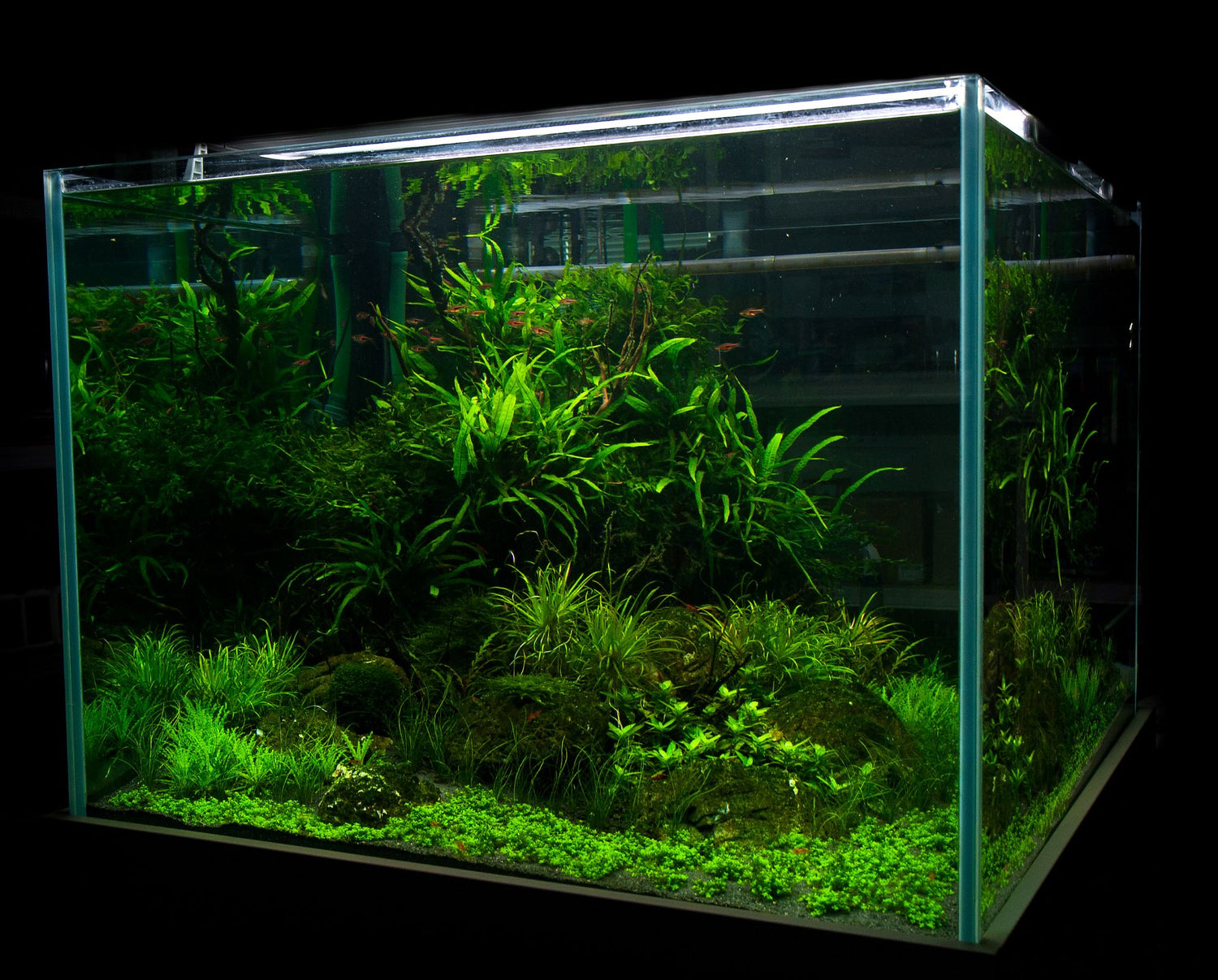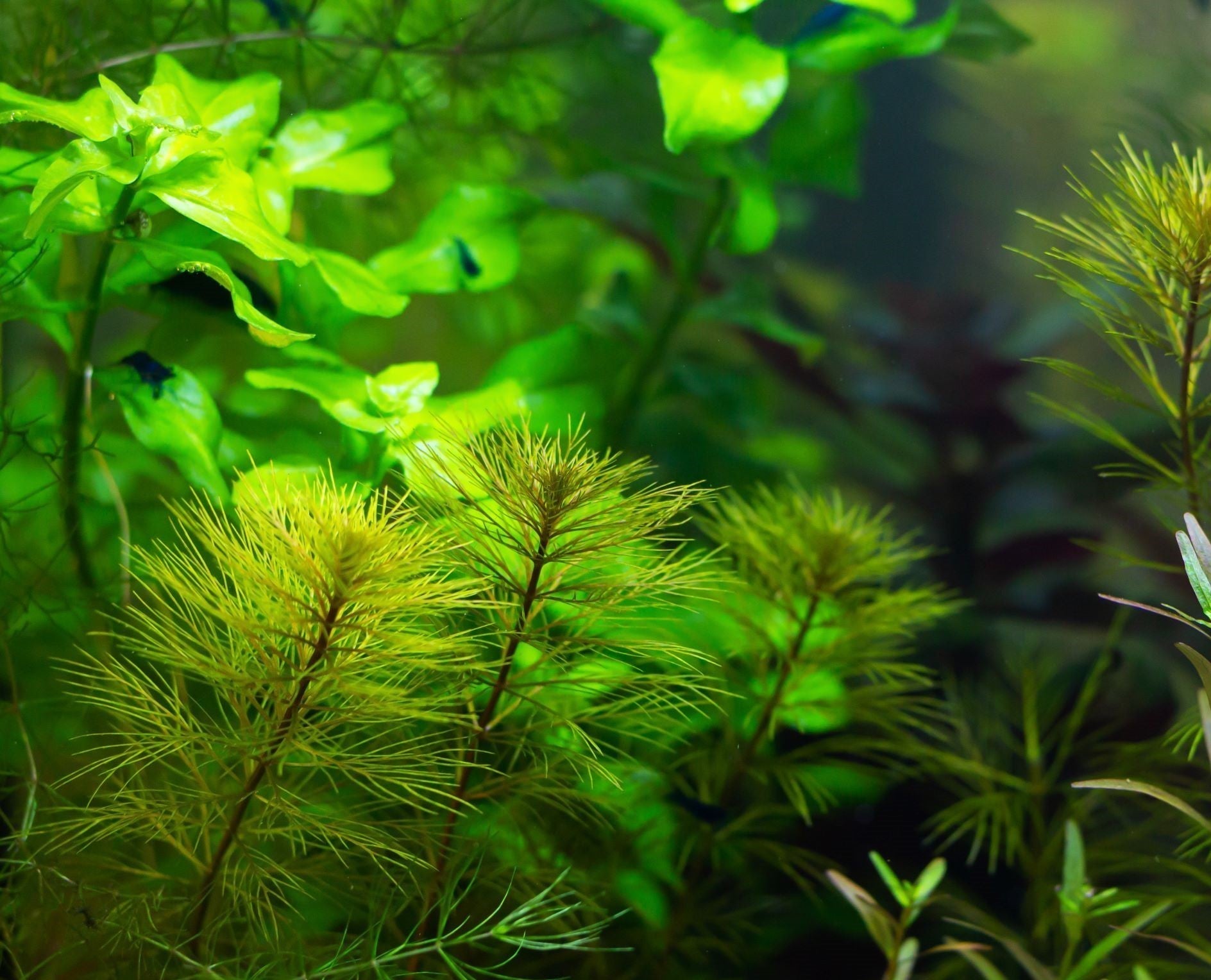What is aquascaping?
Aquascaping is the process of creating a landscape within your aquarium using rocks, wood and live plants. Aquascaping has become very popular over the last decade with an array of styles and methods becoming more and more popular. The idea behind aquascaping is to create a naturalistic and eye pleasing habitat for your fish.
What do you need?
To start with you need an aquarium, filter, heater (if tropical) and a light. Look into lighting options for you budget, depending on what plants you plan to grow you may need strong planted aquarium lighting. However slow growing easy plants like Cryptocoryne and Anubias will do well even with lower lighting. Now the fun bit! Do some research into aquascapes you like the look of and come up with a plan on what type of rock, wood, substrate and plants you like the look of. Gather your materials, it is always worth while getting slightly too much substrate and hardscape materials than you think you will need, this will give you more choice when putting your aquascape together. When it comes to the hardscape in general you want to go bigger than most people would think. Obviously, it needs to fit in the tank (although wood coming out of the top of the water can look great) but do consider the fact that you will be adding plants in which are going to grow and cover you hardscape so make you such your hardscape is as dramatic as possible. Generally, I recommend having your largest focal piece of hardscape be at least three quarters of the height of your tank. Some aquarium shops have aquascaping dojos allowing you to create your dream hardscape layout before you buy.
Rules for aquascaping
We are not going to dive too far into exact plans and the golden ratio in this blog as this would quickly become a 100 page book! Which is actually a great place to start if you are new to aquascaping, get some books and watch some videos to get an idea of what you want to achieve. Keep in mind some specialist aquascaping books can be found for a cheap price but some from the 90s can be worth hundreds of pounds. Also look up the golden ratio to get an understanding of this. Now you’ll probably find that when it comes to setting up your own aquascape hopefully you have an idea in mind of what you want to achieve. Some popular rules include making sure the aquascape is not too symmetrical, avoid placing main hardscape pieces in the centre of the aquarium and try to ensure each side of the aquascape is slightly different. Another good idea is to start off by placing your largest main piece of hardscape at the start and build the rest of your aquascape around this. It is recommended to keep the foreground of the aquascape open and be sure not to place any large hardscape materials to close to the front glass. Remember to think about how you are going to maintain the aquascape and imagine the plants when fully grown.
The process:
To start with add a thin layer of substrate, this will help spread the weight of your chosen hardscape and will allow you to angle pieces if you need to. Once the base layer of substrate is in add your hardscape materials (your rocks and wood), keep in mind wood may float until waterlogged which can take a few weeks. Start off with your largest pieces of hardscape and build the rest of the hardscape around them. Remember to go bold with your hardscape as plant growth will hide some of your rocks and wood over time. We recommend install the equipment into the aquarium during the hardscape process, so you make sure you are left with enough room for everything. From there start planting the tank, be sure to research the best way to plant certain species, plants like Cryptocoryne should be planted into the substrate whereas Anubias should have its rhizome in open water so it is best to wedge this between rock or wood. Keep a spray bottle nearby so you can keep your new plants moist as you do not want them to dry out. Once you are happy with the setup it is time to fill the tank, either add a bowl or colander over the tank whilst filling and very slowly fill the tank up with water, I know you are thinking of filling it slowly but go even slower that. The last thing you want to do is destroy your aquascape by pouring water in too quickly. Then cycle your tank before adding fish and enjoy!
Lastly although there are general rules for aquascaping, if you are catering for your fish health feel free to throw these rules aside if you want to try something new or go against the grain. For example, if everyone around you is setting up planted aquascapes for small schooling fish but you really want to try your hand a Neolamprologus Leleupi Tanganyikan cichlid setup then follow your heart and setup the tank you really want because at the end of the day, it’s your tank! Who is to say a cichlid tank cannot look great! Social media can induce hype around aquascape genres which not everyone will find appealing in their home and that’s okay. It’s okay to be different and having differences in our setups makes this hobby even more interesting in my opinion. Enjoy the process, care for your fish and enjoy your tank every day!
By Alasdair McPhail




Leave a comment
All comments are moderated before being published.
This site is protected by hCaptcha and the hCaptcha Privacy Policy and Terms of Service apply.